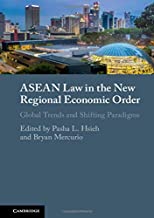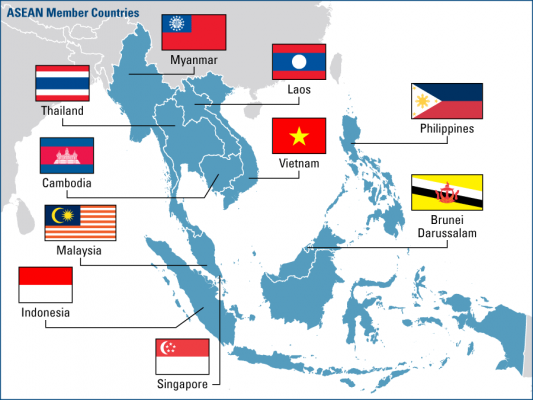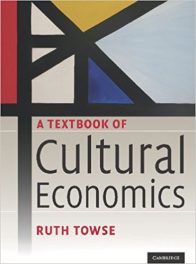 Editors: Pasha L. Hsieh and Bryan Mercurio
Editors: Pasha L. Hsieh and Bryan Mercurio
Publisher: Cambridge University Press – 426 pages
Book Review by: Sonu Chandiram
The Association of Southeast Asian Nations (ASEAN) is a regional grouping of 10 countries with a combined gross domestic product (GDP) of US $3.11 trillion in 2019, amounting to about 3.5 percent of the total world GDP of just over $88 billion. These numbers are based on a nominal basis, with the measure of comparison being the United States dollar.
But the GDP on a purchasing power parity or PPP basis would be different, with the local currency being the measure of comparison in each country. Those numbers would answer this question: “How much would this identical (fixed) basket of goods and services cost in your country?” If a country’s exchange rate with the US dollar is high, it would require few units (or fractions of that unit) to buy that basket. If its currency exchange rate was low, it would require more units to buy that basket.
As of January 20, 2020, the most valuable currency in the world was the Kuwaiti Dinar. It cost US$3.29 to purchase each Kuwaiti unit of currency. On the other end of the scale, the least valuable currency on that same date was the Iranian Rial (IRR). It cost IRR 114,000 to buy one United States dollar.
Presently, the rates of GDP growth in South East Asian countries, including the 10 members of the ASEAN, are generally faster than in Western countries such as in Europe and in North America. Whether that will change is difficult to foresee because there are inflationary trends in Asia, and many countries’ currency values have eroded significantly in recent years, particularly in India and the Philippines. This factor has badly hurt their ability to buy oil at affordable prices
Because of having similar economic imperatives and common experiences in spurring economic development, members of the AESAN formed this regional alliance in 1967. They have developed better trade relationships among themselves to spur growth of their respective economies.
They have forged the ASEAN Economic Community Blueprint 2025 that provides a roadmap to future regional growth and raising the standards of living for member nations.
Twenty-one specialists in political and socioeconomic topics from 14 countries – Australia, China, Hong Kong, India, Ireland Japan, Malaysia, New Zealand, the Philippines, Singapore, South Korea, Taiwan, Vietnam, and the United States – authored or coauthored the chapters of this book. Shown below chapter titles, providing you a broad overview of the contents:
- Part I – ASEAN Agreements in the Global Context
- ASEAN Law in the New Regional Economic Order: an Introductory Roadmap to the ASEAN Economic Opportunity
- The ASEAN Trade in Goods Agreement: Evolution and Regional Implications
- Building toward the RCEP? Reflections on the ASEAN-China FTA
- Dispute Settlement Provisions in ASEAN’s External Economic Agreements with China, Japan, and Korea
- Part II – Services Trade and Financial Integration
- Moving Toward Liberalization: The ATISA and Beyond
- Challenges of ASEAN MRAs on Professional Services
- Banking Integration on ASEAN and the Challenges of Regulatory Cooperation
- The Shifting Sands of Capital Market Development and Integration in ASEAN: the Case of the Philippines and Indonesia
- Transnational Legal Services in Asia: Legal Implications of the AEP and the CPTPP
- ASEAN Air Transport Integration and Liberalization: A Slow but Practical Model
- Part III – Investment Liberalization and Protection
- Investment Liberalization in ASEAN: Moving from Myths to Reality
- The ACIA: Much More than a BIT of Protection for Foreign Investors?
- Fragmented Approaches to Investor-State Dispute Settlement Mechanisms in Intra-ASEAN and Extra-ASEAN investment Treaties
- Pro-Development Dispute Resolution Mechanisms and Norms for Investment and Commercial Disputes in ASEAN.
- AEC & Regulatory Reforms in CLMV Countries with Special Focus on Myanmar
- Part IV – Intellectual Property, Digital Trade and Consumer Protection
- Free Movement of Goods and Intellectual Property Exhaustion in ASEAN: a Road Block in the ASEAN Way?
- Legal and Regulatory Challenges to Facilitating E-Commerce in ASEAN
- Data Localization and Digital Trade Barriers: ASEAN in Mega-regionalism
- Consumer Contracts and Product Safety Law in Southeast Asia: Partly Trading Up?
- Conclusion: Realizing the AEC Blueprint 2025
We have often heard the saying: “In unity there is strength.” The success of the ASEAN in achieving collective economic growth for its members since 1967 is testimony to the truism of this saying.
Editors:
Pasha L. Hsieh is an associate professor of law and Lee Kong Chin Fellow at Singapore Management University (SMU). He is co-chair of the Law in the Pacific Rim Region Interest Group of the American Society of International Law and an Executive Council member of the Society of International Economic Law. Prior to joining academia, he served as a legal affairs officer of the WTO Appellate Body Secretariat and as an associate at Shearman & Sterling LLP. He was awarded SMU’s Lee Foundation Fellowship for Research Excellence in 2010 and received the Most Outstanding Legal Studies Teacher Award in 2015.
Brian Mercurio is professor, Associate Dean (Research) and Vice Chancellor’s Outstanding Fellow of the Faculty of Law at the Chinese University of Hong Kong. He is the author of one of the most widely-used books on World Trade Organization (WTO) law (Hart Publishing, with S. Lester and A. Davies) and editor of the leading collection on bilateral and regional trade agreements (Cambridge University Press, with S. Lester and L. Bartels). Prior to relocating to Hong Kong in 2007, he taught as a tenured member of the faculty of law at the University of New South Wales, and as a visiting scholar at universities in Australia and North America.







